Installing a new pool requires a good deal of forethought, as you want to ensure you’re still happy with it 10, 20, and even 30 years down the line.
Modern inground swimming pool designs are putting more focus on quality and durability while simultaneously keeping costs down.
Fiberglass pools are proof of this, gaining significant traction in the last 15 years for those exact reasons.
Note: If you’re curious how this type of pool stacks up against alternatives, check out our full comparison of fiberglass, concrete and vinyl pools.
What Is A Fiberglass Pool?
Fiberglass pools are a popular type of inground pool or partially inground pool, though fully above ground variants are also possible.
Using a technology that has been around for almost 100 years, fiberglass pool models are crafted from a mixture of resin and fiberglass strands (or roven woving) to create the pool structure.
Molds are created first and the fiberglass material is then shaped on top of it. This forms the pool structure which then has a layer of gel coating applied to it, giving it a durable finish.
Major technological advancements in these materials have significantly strengthened the quality of fiberglass pools, allowing them to compete with both concrete and vinyl-lined models.
Are Fiberglass Pools Worth It?
Low maintenance, energy efficient, and a quick install time are all trademarks of the fiberglass pools.
But are they worth going this route?
Let’s dive in and answer your questions.
What Shapes/Sizes Do They Allow For?
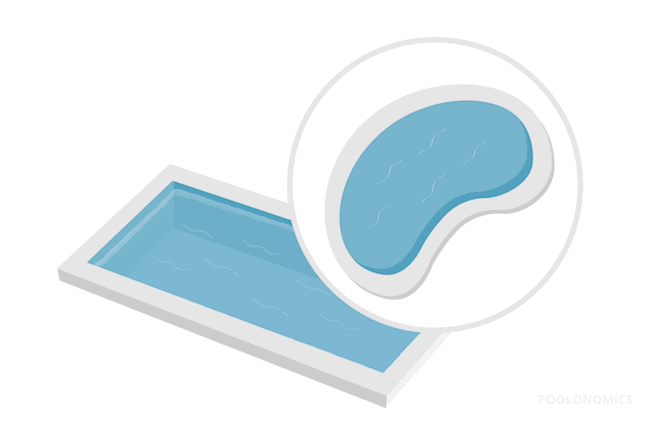
Answer: 4 shapes, with a maximum 16 x 40 size.
Unlike concrete or vinyl liner pools, fiberglass swimming pools are limited in both their designs and sizes.
The reason for design limitations is because they’re created from molds rather than from scratch. The good news is there’s still enough of a variety to fit most backyard aesthetics.
The 4 pool shapes you’ll be able to choose from are:
- Rectangular
- Roman (rectangular with arched ends)
- Kidney
- Freeform (lagoon style)
When it comes to sizing, a maximum of 16 x 40 is the biggest you’ll find. This has nothing to do with catering to today’s increasingly smaller lot sizes, but rather because the entire pool structure has to be transported.
This involves relocating it from the shop to your home using a flatbed truck, so it must be able to meet road safety standards during transportation.
What Colors/Finishes Do They Allow For?
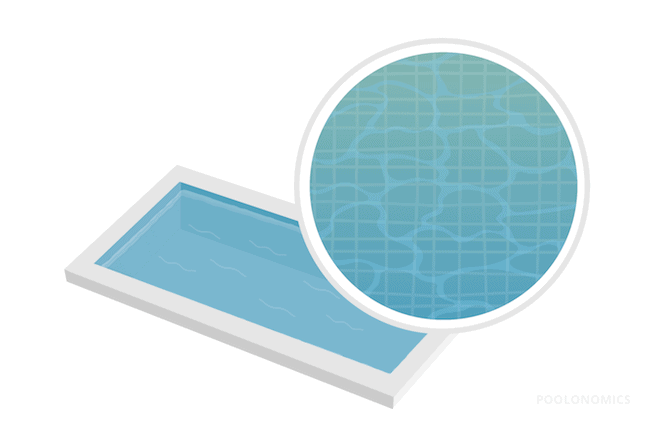
Answer: Many to choose from.
The finish on a fiberglass pool is a triple-layered, 25 to 30 mm gel coating made from colored resin. It needs precisely three layers because if the gel is too thin it can bubble, and if too thick it can crack.
Just like any swimming pool finish (ie. plaster, aggregate, tile), color tones for a fiberglass pool finish can vary. These include various shades of blue, white, or grey.
Lighter colors keep the water transparent and tropical-looking, whereas darker shades make the water opaque and appear deeper (like a lake). Some gel finishes will even include speckled variants which reflect sunlight to make the water sparkle.
Fading of pool finishes is common across the board, and fiberglass pools are no exception. However, this process is so gradual with this finish that you won’t even notice it happening.
What Other Customizations Do They Allow For?
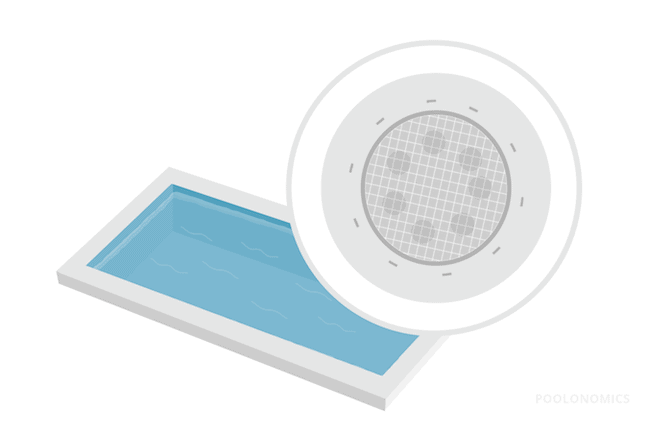
Answer: Plenty of options.
When designing a pool you want to take into account the aesthetics of the entire backyard, so you can match (or contrast) colors and features.
Aside from customizing the size, shape, and color of the finish, you can add waterline tiles to these pools. This adds a touch of luxury with an upscale accent, while not having to deck out the entire pool in tiles, which is extremely costly.
Lighting can bring your pool to life at night, and you can customize the number of lights and where they’re located for maximum effect. There are LED options that can be set on timers, using pre-programmed color cycles to create your own backyard light show.
Pool water features can also be incorporated into a fiberglass pool design. These features are quickly gaining in popularity as they’re relatively low cost, and provide visual flair to your pool. These features include things like waterfalls, scones, scuppers, fountains, deck jets, bubblers and water slides.
Additionally, the pool deck can also be customized. You can choose your own material for the deck and coping (ie. concrete, travertine, stone), and it can be designed to contrast or blend with the pool water color.
How Do They Feel To The Touch?
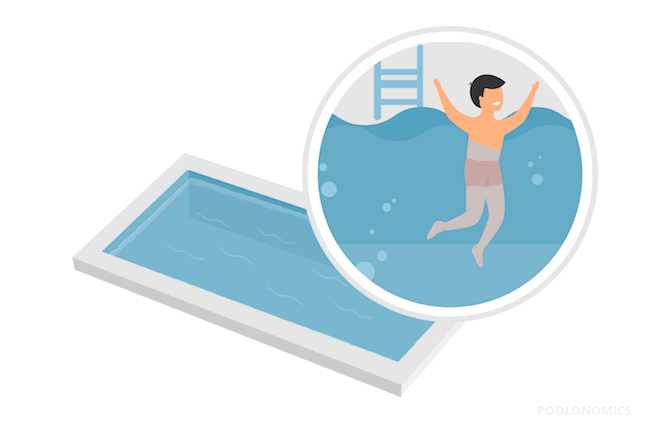
Answer: Smooth to the touch.
Fiberglass pools are the smoothest feeling out of all pool types. This is because of the gel finish they’re coated with.
Concrete pools can be rough, and plaster finishes can be smooth but bumpy. Aggregate finishes are textured for grip (and style), and vinyl-lined pools feel smooth but slippery.
Fiberglass pools give you a smooth and stable surface that is also anti-slip, making it ideal when entering and exiting the pool.
How Do They Impact Water Chemistry?
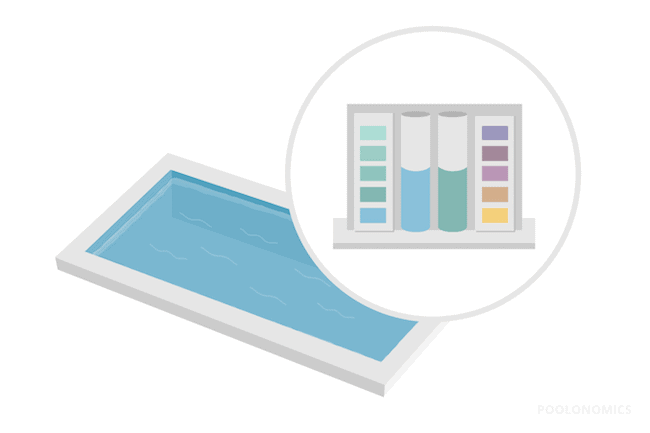
Answer: They don’t.
Simply put, fiberglass pools don’t affect the chemistry of the water in any way because their surface is inert.
Of course, you still have to keep on top of all the proper chemical levels to keep the water clean. pH, chlorine, alkalinity, calcium hardness, and cyanuric acid should all be checked weekly via pool water testing.
As fiberglass pools won’t cause the water to become acidic or alkaline, you’ll have to balance the pool water less often, saving you money on chemicals.
Whereas, a concrete pool (which is alkaline-based), increases the water’s pH level over time. This means you’ll constantly be adding chemicals to reduce the pH level of the pool to bring the water back into balance.
Of note, a fiberglass pool will keep your water warmer than its competitors. This is due to the nature of its inert finish, which keeps the structure from absorbing heat. You’ll be able to save money by running your pool heater less often, and you may even be able to get away with only using a solar cover.
How Easy Are They To Maintain?
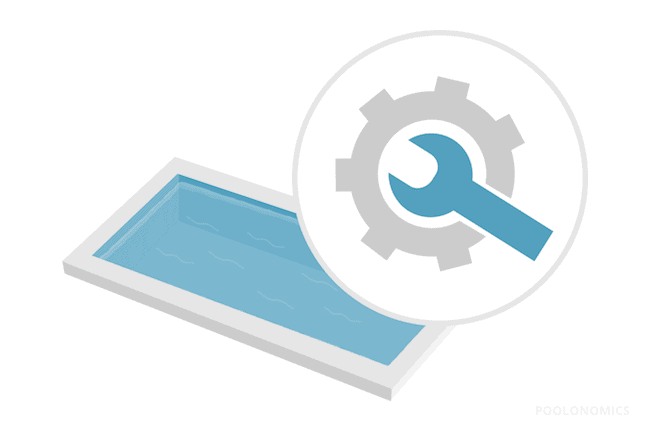
Answer: Extremely low maintenance.
Out of all the swimming pool types, fiberglass pools require the least amount of cleaning and are also the easiest to clean.
For starters, due to their non-porous and smooth gel finish, it makes it hard for micro debris and various types of algae to attach itself and spread throughout the surface.
When getting rid of algae by shocking, a fiberglass pool will be good to go in 24 hours, whereas it can take anywhere from 3 to 7 days to clear up a vinyl liner or concrete pool.
While you should practice regular pool maintenance no matter the pool style, the gel finish in fiberglass pools can be damaged with harsh cleaning products.
For the most part all you need is a skimmer net, a vacuum, and a damp rag with some mild pool cleaner to clean up any grimey areas. Keeping the water line clean is also important so that nothing eats away at the gel.
As for filtration, these pools only need 1 circulation of pool water per day compared to concrete pools which require 2. Less running of your system means less electricity used, means less money you’re spending.
How Long Do They Usually They Last?
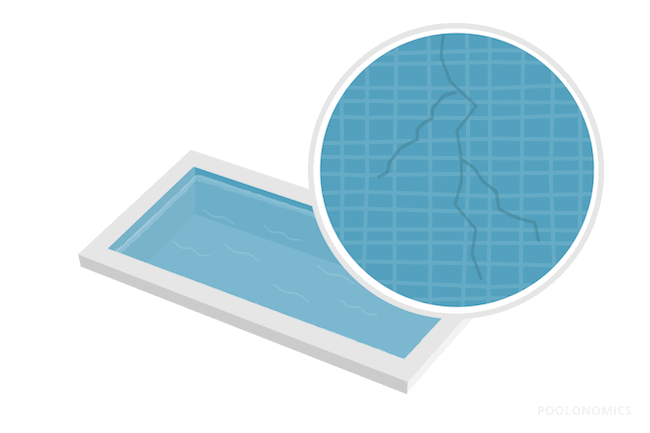
Answer: A very long time.
Fiberglass pools will come with 2 warranties: one on the fiberglass structure itself, and another on the gel coating.
You’ll have to read the fine print regarding warranty, but the fiberglass structure is designed to last upwards of 50 years.
As for the gel coating, it should last between 20 and 30 years. Once the gel is at the end of its lifespan, you can resurface the pool with a new layer of gel. This keeps you from having to replace the entire structure.
However, it’s important to remember that your pool water chemistry should always be well maintained to avoid negatively impacting the finish and prematurely degrading it.
How Easy Are They To Install?
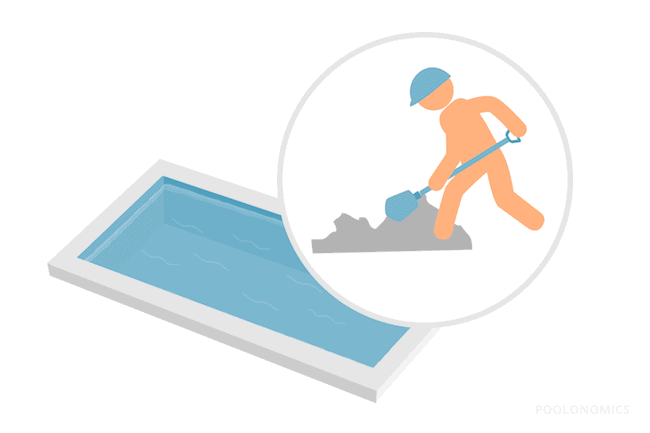
Answer: Easiest type of pool to install.
The single structure shell design of these pools make them the easiest type to install. Some people with advanced construction skills can even do it themselves, but we recommend letting a professional do your install to avoid any problems.
The entire process can take a few weeks, although some installs can be done in a few days. It really depends on your backyard and the amount of work that it requires in preparation.
After you have a layout of the backyard (pool location, deck, landscaping, etc.), excavation can begin. Once the hole is dug, a bed of sand is laid on the floor to give the pool a base.
The pool structure is then placed and leveled. Backfilling begins while the pool is simultaneously filled with water so that there’s equal pressure and stability.
A concrete bond beam is then installed keeping the shell in place by anchoring it. The final piece is the installation of the deck, and you’re ready to swim!
How Much Do They Cost?
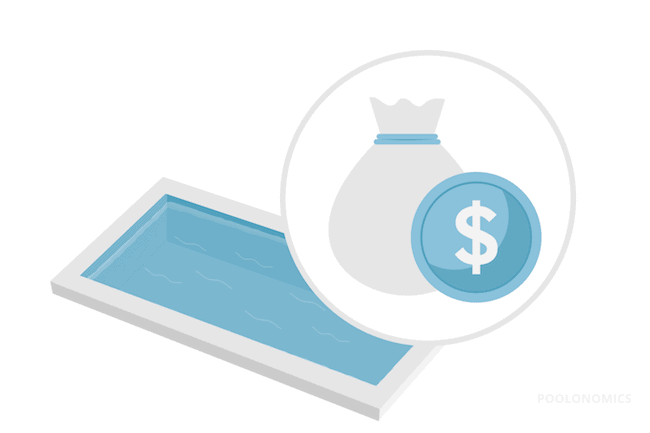
Answer: On average, about $40,000.
Fiberglass pools range from $15,000 all the way up to $70,000. The price of the shell itself is anywhere from $10,000 to $40,000.
This number will fluctuate depending on the pool size, the quality of materials, and any extra features it may include such as steps, seating, or a ledge.
Installation is a big chunk of the price of these pools. Be prepared to pay anywhere from $15,000 up to $30,000 for a professional to do the job.
Maintaining the pool will save you some money compared to other pool types, as fiberglass models only need to be cycled once a day, and the non-porous finish won’t cause the water chemistry to get out of balance.
It’s also worth pointing out that DIY fiberglass pool kits can be found for a slightly cheaper price of anywhere between $15,000 to $35,000, assuming you don’t mind assembling it all yourself.
Fiberglass: Is It Worth It?
So are fiberglass pools worth it? We think so.
But it really depends on what kind of pool you want in your backyard. If you’re looking for something ultra luxurious, a tiled concrete pool is probably where you want to focus your attention.
But, if you want a pool that has plenty of upsides, very little downsides, looks amazing, and is extremely budget friendly, a fiberglass swimming pool might be perfect for you.
